Technology
Services
Resources
To enhance standard ads, Google allows marketers to add contextually rich information about a business, product, or service when their ad appears in search results.
Ad extensions can be a quick and easy way to enhance a call to action, add immediacy, and improve conversion, by reducing the number of steps for the customer.
Below are some sample applications of Google Ad extensions:
Include relevant price information for your product or service. Users can link to specific products relevant to their ad.

Add a phone number so customers can easily call your business. For mobile-focused campaigns, this can improve performance as users can convert with a simple tap.
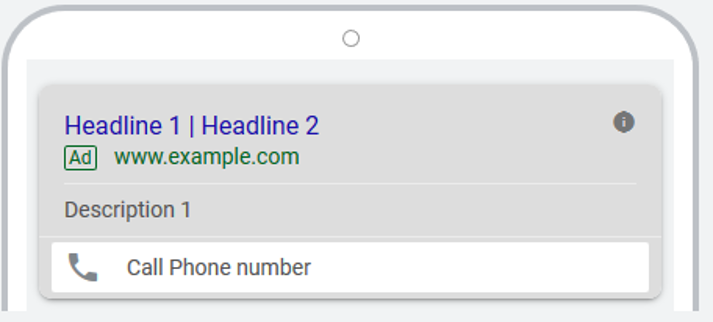
Prompt users to submit customer lead information directly inside of the ad.

Display specific, contextually relevant pages from your website.
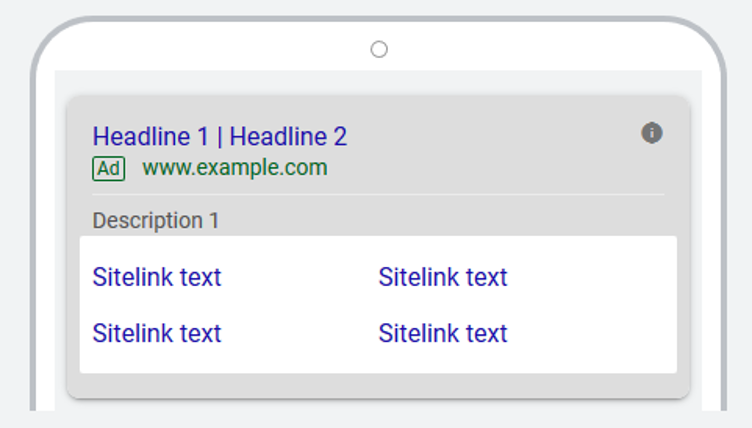
Include descriptive text about your product or service, such as “Free Shipping” or other information relevant to your ad.
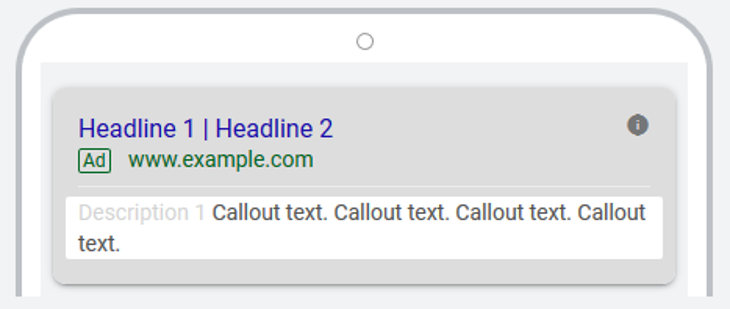
Provide users with an immediate preview of your product and services by including brief descriptions from text on your website.
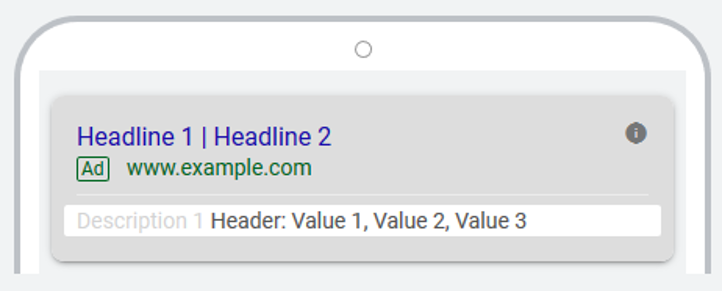
Include relevant business information, such as address and store hours.
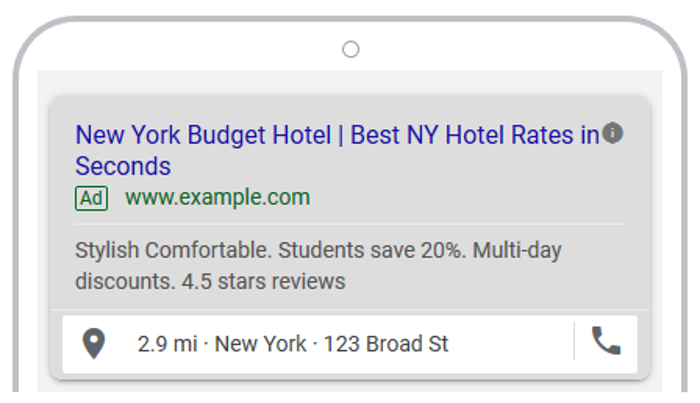
Display affiliated locations including nearby shops where your product is sold.

Encourage users to download your company’s mobile app.
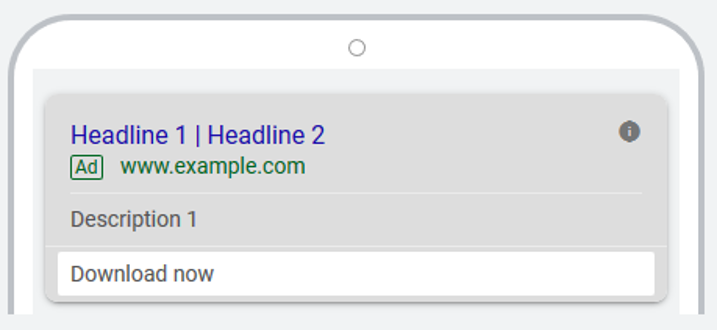
Showing promotional sales and offers inspires the user to learn more about the product or service advertised in your ad.
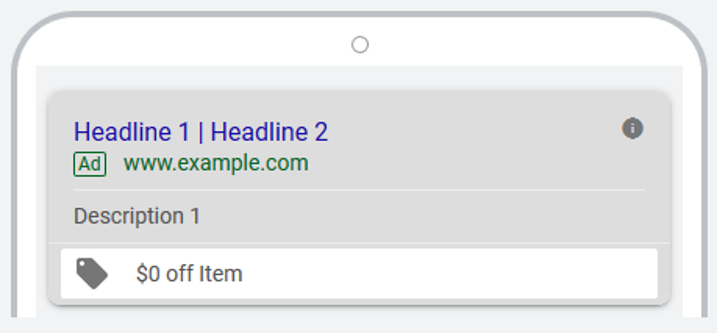
Google allows users to report on performance with and without ad extensions, so you can test and evaluate which ads are performing and how extensions are helping to drive campaign success. Google also allows users to enable automated extensions, which use algorithms to generate copy, location, phone numbers and other details dynamically from your website.
Learn more about Display Advertising with Centro.
I’ve had the pleasure of working from home with my husband for several years. The honeymoon phase of spending 24/7/365 together certainly ebbs and flows, but through trial and error, we've found many ways to optimize our "working" relationship.
Here are my five top tips for coworking with a partner:
1. Take turns making lunch
This prevents you from wasting an hour every day asking, “What do we want to eat?” Meanwhile, it feels luxurious on the days your partner makes the meal.
Alternatively, trade off tasks instead of days—for example, one of you cleans and the other makes meals.
2. Show each other your work
Ask for some help on something or show off a new project. It’s amazing how much better your work gets when you have a second set of eyes. Even if it’s just “Can you read this email before I send it?”
And, learn about your partner’s job! It’s shocking how many couples know almost nothing about how their partner spends most of their time. Even if it’s just “What does that acronym you said on that call mean?” Apparently all I say everyday is KPI, CPM, and ROI…
3. Have clear boundaries
Ask before you interrupt and don’t get mad if your partner is busy. Set some clear boundaries like, “When my headphones are on I can’t talk.”
It's also helpful to have a clear boundary activity between working and not working. Even if it’s just “We’ll go for a walk at 6pm.” Otherwise you never really stop working.
4. Plan some post-isolation fun stuff
Start planning a few things you can’t do right now that you’ll do afterwards. Even if it’s just a big dinner or a road trip. Give yourselves something exciting to look forward to.
5. Don't forget the small stuff:
Interested in joining our team? Check out our careers page.
The time has come, and it is long overdue. We need to retire using click-through rates (CTR) as a performance metric that defines success on digital display advertising or social campaigns. Sure, it served us well in the early days of digital advertising as a reliable metric we could count on. But now? Let's make digital media meaningful and say goodbye to CTR being the sole measure of success.
As the digital display advertising landscape has become more complex, CTR falls short in connecting the dots and driving results. Many channels and tactics come into play with campaign execution, and CTR is rarely going to provide the most meaningful results towards an agency or brand's overall business objectives.
Ask yourself: what meaning has come from CTR recently? If site traffic is the ONLY goal you care about as an outcome from digital display advertising, then consider moving to a Landing Page View (LPV) goal. This can help bridge the gap between driving site traffic and a user’s time spent on a page. Facebook pushed for this shift from CTR to Landing Page Views in 2018 to combat “clicky” behavior from users and drive more meaningful and efficient performance. Centro quickly adopted this best practice and saw very strong results across many verticals.
If you are looking to move drive stronger results for your brand, then let's all agree to put CTR away. Instead, focus on getting those pixels placed!
Laying out a clear and concise pixel strategy by identifying key actions on the site to track, and ultimately, the most valuable or final action a user can take, provides the opportunity for far more actionable insight for all display advertising campaigns. Not only will you be able to understand true efficiency against media dollars in getting a user to act or convert, but this also creates more clarity around the customer journey.
Here is where the meaning comes in. By understanding your audience's path to conversion, more measurement and analytic solutions arise. From implementing a DMP strategy – to the use of attribution modeling, to testing new creative messaging—all these opportunities and more, can now come into play.
Based on current global, economic, and cultural conditions for the foreseeable future—meaningful approaches to support digital media and display advertising efforts should pay off in the long-run. This time has forced many advertisers to pause, reflect, and reframe their messaging. It is an opportune period to find ways to be precise, deliberate, thoughtful, and thorough in digital media and display advertising executions.
Centro is here to help navigate these difficult times. We highly recommend tuning into Centro’s most recent webinars about Industries in Flux: Advertising Through Crisis and Industries in Flux: State of QSR’s. We also recommend checking out a recent blog post about How COVID-19 is Changing Media Consumption and the most recent Digital Innovations Awesome List, which compiles the latest trade pubs and trends.
As we face a new frontier in every facet of our lives, let us reflect and act on moving digital media into having a positive and meaningful impact in the future. Trust us when we say: the future is free of CTR.
Just about every industry has been hit hard by the coronavirus crisis, perhaps none more so than travel. The vast majority of tourist destinations across the world have been shut down at some point throughout the second quarter of 2020, while social distancing restrictions continue to greatly reduce the capacity for travel businesses to earn revenue.
That said, spending months stuck indoors has left many in desperate need of a vacation. Countries and cities are also taking precautions to support summer travel. Regardless of how bleak things may look, travel marketers should start preparing their strategy to begin their recovery process.
Here’s how you can get started:
Depending on where your business is located, you may still be unable to accept new bookings. But that’s not a reason to leave your marketing strategy on pause until you can. There’s a lot you can do to build brand awareness in the meantime to keep your business at the forefront of customers’ minds for when they can book with you.
Take to your social media channels to deliver your brand message and remind your audience why your business is so great. Look at what other travel brands are doing to keep an active social presence during any ongoing lockdowns—Sunset Marquis, for example, has weekly Facebook Live events where their chef offers at-home cooking tips.
Regardless of whether or not you can welcome any bookings or earn revenue from such brand awareness efforts, these tactics will set you up to start out strong when things open up. You can likewise take this opportunity to promote gift card purchases, as many of your loyal customers may want to support your business during this time. Gift card purchases can further ensure a steady flow of customers when you finally open for business.
Times are still very uncertain, which is why few people are willing to make travel plans right now. If you want to convince your audience to purchase, you need to offer security and incentives to make it justifiable.
According to a recent Fuel Travel survey, here are the factors that would most likely persuade consumers to book a future vacation during the coronavirus outbreak:

While a lot of people wouldn’t book travel right now for any reason, that number will gradually go down as time passes. There are also a plethora of tactics you can implement immediately to encourage future bookings, namely:
If your business is located in an area that relies heavily on tourism for income, you could take advantage of any city or country-wide ordinances aimed at protecting travelers. The Cyprus government, for instance, has vowed to pay for the vacation of tourists if they get coronavirus after their stay.
Your target in-market audiences need to shift for a while after the coronavirus. It could be quite a considerable period of time before people are allowed to fly to certain countries, and even longer before people feel safe going through the whole process of flying. With that in mind, it makes sense to target local audiences who can reach your destination by driving.
Even if most of your target audience are foreigners, you can bring in a lot of new revenue from nearby locals. People in your area want to go on vacation this summer, but will likely be restricted as well. Your business can be the solution that helps them “get away” and enjoy the summer without going far at all.
Now is a really important time to reevaluate your marketing message and adjust it to fit the realities of coronavirus. The first thing you should do is illustrate that you’re taking the virus seriously. Promoting old videos or photos of large groups of guests sharing food at a buffet is an example of something that might make your audience uncomfortable now. Be sure to go through all your content and look at it through the eyes of someone troubled by a pandemic.
When creating new marketing material, try to deliver a message of hope instead of just focusing on caution. Help your audience see that things will eventually get better and that they can have their travel plans worked out for when they do.
You can also market your business better by focusing on things people have missed most during the pandemic. For example, instead of promoting in-room amenities to an audience that’s been stuck inside for months, it makes more sense to feature outdoor activities they can participate in at a safe social distance. To get some inspiration, here are some of the different topics consumers said they’d like to hear about from hotels during the outbreak:

Now is a really good time to perfect your paid media strategy. Display ads are a great way to showcase your brand awareness efforts and keep your business relevant and in the limelight. Paid search ads are also a fantastic option to focus on. Fewer businesses are investing in paid ads right now, which means cost-per-click (CPC) is going down. This is an opportunity to get more visibility for your ads without having to pay more to compete with other businesses in the auctions. This strategy is particularly valuable when targeting bottom-of-the-funnel audiences looking to book hotels or other travel services for a later date. In your ads, use discounts, amenities, and other incentives to convince people it’s an ideal time to book.
There many strategies you can execute on right now to prepare your marketing strategy for when governments give the green light for travel. The real key to recovery, though, is flexibility. There’s no way to know for sure how much business you’ll get this summer or when things will really start getting back to normal. You need to follow the trends post-pandemic and adapt your strategy to match them.
Start by regularly aligning your marketing plans with your revenue manager. How much you should spend on advertising really depends on how much you can hope to earn. Search volume on your highest-converting keywords can be a good indicator of how many sales you might expect to see this summer. As time goes on, pay attention to your sales projections and invest more aggressively in bottom-of-the-funnel targeting as demand increases. Adjusting your strategy means slowly investing more in lower-funnel and less in upper-funnel initiatives, based on realistic revenue potential.
Once demand starts to go up consistently, you can confidently wind down your brand awareness efforts and focus more on converting leads. For advertising, this means bidding high on brand keywords, investing in retargeting ads, and using other tactics to convince your audience to buy now. Even as things get back to normal, you should still promote special offers to differentiate your business and maximize new sales at the beginning.
Effective communication is one of the most important soft skills you can have in our industry. But even for the best communicators, challenges arise when transitioning from communicating in-person to communicating virtually.
On that note, I wanted to share some tips, tricks and suggestions on how to best communicate with your manager while you're working remotely. Ready? Let's do this!
Now more than ever, you’ll want and need this time together. Make sure you have an agenda for each meeting so that you can use the time effectively and efficiently.
I’ve always found it helpful to wrap up my 1-on-1 with a quick recap of the call so that both my manager and I are clear on what we’ve discussed and any next-step action items.
Many of us take for granted the tremendous amount of information that’s shared when we’re physically in the same office: quick chats in the hall, popping into your managers office, turning to your left or right to ask a question, etc!
This loss of ease might have you feeling like you need more frequent chats with your manager. If this sounds like you, ask for the time you need!
Between email, Zoom, phone, video, text, Teams, Slack and more, we have access to so many ways to communicate.
Take the time to assess what works best for you and your manager. Try to avoid falling into the trap of rapid-fire communication across every tool you have access to. The goal here is to streamline communication, not to make it chaotic or cause confusion.
If you’ve made it this far into my blog post, I may have inadvertently confused, offended, or bored you. Please understand, it wasn’t intentional!
See what I did there? The point is that there is a lot of room for misinterpretation when we communicate via email. So, try to be as clear and concise as possible, and don’t take things personally if you’re on the receiving end of an email that doesn’t sit quite right with you.
Sometimes it helps if you insert some personality into emails to help set the right tone: .gifs, emoji’s, etc. ?
If you exchange 3 emails on the same topic, STOP. You are not communicating clearly. Ask to hop on the phone or if it’s not time sensitive, add it to your check-in agenda.
This one applies to not just your manager but your entire team: Thank them for their hard work, for their generosity, for their understanding…we’re all in this thing together!
“More frequent 1-on-1s. Come to the 1-on-1 with an agenda to discuss with your manager.” —Alana Putterman
“Use texting for an immediate concern. Use email for things that you have more time. Over-communicating is key—sharing both what does and doesn't work to get feedback.” – David Lempp
“Be transparent and over-communicate. Wouldn't be a bad idea to set some expectations on WFH with them, your schedule and the best way to reach each other. Get regular weekly 1-on-1s on your calendar if you don't already have them scheduled. Come prepared with questions, updates, challenges and wins.” —Kelly Wittmann
“I will always go on Teams in the morning and just say, "Hey," to my manager and teammates. It lets them know I’m here and alive, also starts a conversation if necessary.” —Michael Lagioia
“Speak to them about the best way to communicate daily (text, IM, email, call, etc.). Share your goals, priorities and deadlines upfront on a weekly 1-on-1 call. Don’t make assumptions, if you have questions or feel unsure just use the phone and actually speak with them.” —Kami Lentz
Interested in joining our team? Check out our careers page.
While many businesses have been forced to cut back or halt their marketing efforts this year, now is the time to start thinking about the future. It’s expected a major recession will have an even larger impact on society than the coronavirus itself. If your business is going to survive and thrive in the long run, you need to adapt your marketing strategy so it’s maximally optimized for the new world order.
Here are a few key strategies you can start implementing to help your marketing program recover post-COVID-19:
This is probably the most important piece of advice for marketers post-COVID-19. You can’t go back to business as usual after a global pandemic that’s impacted just about every person in the world. Delivering the same old marketing message would simply come off as insensitive.
If you want to keep your customers happy and content, you need to send out a clear message that elicits care and understanding. You’ve probably seen numerous examples of businesses already doing this. Allstate Insurance started a loan program for customers impacted by the coronavirus. Verizon Wireless live streams a weekly series raising money to help small businesses during the pandemic.
Failing to reach out to your audience to show that you’re there to help can have a serious negative impact as well. At the beginning of the outbreak, when Airbnb started canceling reservations and leaving hosts to deal with the losses, there was outrage. Hosts felt abandoned by the company and it was making global news headlines. Airbnb then quickly launched their Superhost Relief Fund, a program offering small grants to hosts struggling to make ends meet.
While the fund doesn’t help the vast majority of hosts, the gesture was all they needed to avoid negative sentiment towards the brand. So, try to do something, no matter how small, to show your audience that you care.
While most of the advice in this article relates to marketing sentiment, there are also some strategic changes you can make to improve your strategy post-COVID-19. One of the most purposeful tactics is investing in PPC ads. According to WordStream, conversion rates from Google ads decreased drastically after the pandemic began. This makes plenty of sense because most ads relate to businesses and services that simply can’t be used during lockdowns. Many people have also been impacted financially, consequently meaning they will be spending less.
Lots of businesses have paused or cut back their PPC campaigns as a result. This leaves a huge opportunity to win PPC auctions and gain visibility for your ads at a low cost. It might seem counterintuitive to invest more in PPC when conversion rates are down overall, but the truth is the drop in cost-per-click (CPC) is much steeper than the drop in conversions. The post-COVID-19 marketing environment offers a unique opportunity to maximize ad visibility while minimizing costs.
Every industry needs to make major adjustments to how they market online — some more so than others. For highly affected industries (e.g. travel), it makes sense to take a break on promoting ticket sales. At the time of writing this in May, some cruise ship companies are already publishing ads promoting summer trips.
The majority of people think it’s way too early for that, which makes cruise companies look negligent as opposed to caring for their customers. However, there are some ways you can cautiously promote your business given these uncertain times. Airlines wishing to sell tickets could switch to promoting safe business travel instead of targeting vacationers.
Switching focus to long-term lead nurturing is another option as well. Restaurants or vacation rentals shut down by the pandemic could market to their audiences with a reminder to “save up for when things open up.” If you do a good job of nurturing leads during the second half of 2020, then the chances are you’ll get a lot more sales in 2021.
An advertising message that was perfectly acceptable six months ago could be perceived in a negative way today. So before using your old material, take a close look at it through the lens of a global pandemic. Take a look at this Progressive Commercial that showed in March. It features two women having a dull time at a karaoke night:
This commercial wasn’t well-received because it was released at a time when all anybody wanted to do was go out for a fun night with their friends. Now may not be a good time to feature marketing content with people gathering in groups or frolicking outdoors. Even if social distancing measures are being eased in the countries you market to, it’s better to think about the long term. People are going to be cautious about mixing with each other for a long time to come and there’s a very good chance the public may be asked to observe distancing protocols again in the future. The key message is ultimately to make sure your content is sensitive to that before publishing it online.
Advertising platforms like Google have been making changes to help businesses adapt to marketing post-COVID-19. You can take advantage of these to improve the efficiency of your campaigns and drive more conversions. For example, Google has already made it free for US-based businesses to list products on Google Shopping. If you’re in eCommerce or hoping to start, now would be the time to do so. They plan to roll out free Google Shopping listings to other parts of the world later in the year.
Google has also made changes to their Local Inventory Ads so that businesses can highlight curbside pickup. Even after coronavirus passes, people will still feel reassured that they can pick up products in a safe and hygienic way. Start tapping into these features to drive more conversions.
Since a recession is just beginning, it’s important that your sales and marketing strategy work together to reassure potential customers that it’s a good idea to buy from you at this time. Even if they like your products, lots of people are hesitant about buying with an uncertain financial future.
There are changes you can make to quell these fears. For example, if you sell expensive products, you can offer financing or payment plan options to get more people to buy. If you offer software or subscription services, consider giving customers the first month free. Being flexible with payment during a recession can help you drive more sales overall.
These are just a few key strategies that will play an important role for businesses as they look to recover their marketing program post-COVID-19. In the long run, you’ll need to look out for and take advantage of every new opportunity to maximize your marketing performance. Pay attention to consumer sentiment and keep an eye out for new trends, features, and technologies you can use to improve the efficiency and effectiveness of your campaigns.
So, you’re one of the millions of people out of work. It’s hard and you’re likely experiencing the stages of grief. It’s emotional, and you are not alone. Our jobs contribute to our personal identities, and when drastic changes happen due to external circumstances, it impacts us in many ways.
The current global situation reminds us that the only constant is change. When you are ready to get back in the game, know that new opportunities await! Everything happens for a reason, and with each door that closes, a new one opens.
How do you find that so-called “open door”–or should I say, the right open door–for you? Review potential questions you may have and answers/ideas to combat the hurdles and uncertainties that may enter your brain as you get back into the job hunt:
“I don’t see any jobs open right now that actually fall into my interests and expertise. What do I do?”
This time is a gift. Use it to boost your resume with online certifications, education, and e-learning. Is there something you’ve been itching to learn more about? Master some Google tools with Google’s Skillshop, or check out Centro’s Digital Media Essentials training here. Self-improvement, one of Centro’s core principles, is a lifelong endeavor. The more skills you showcase, the more appealing you’ll be to recruiters, and the more confident you’ll feel overall.
“I’m interviewing but nobody even wants me. I should just give up.”
Never give up! Keep practicing storytelling, pitching, and articulating your skill set—you can have all the accolades in the world and the most pristine experience on-paper, but you need to be able to weave and tell a compelling personal story! You may be in a tough spot, but do you still showcase a positive attitude? How are you persevering through adversity to leverage your unique skill set? Own YOUR story, make it special, and perfect the way you share it.
“I’ve been out of practice. The thought of interviewing after all this time scares me. How can I get some practice before the “real” thing?”
Interviewing can be scary. You are being evaluated and for lack of a better word, “judged,” based on a piece of paper and first impression. But remember, just as you are being evaluated—you are equally evaluating the employer. This must be a two-way street to ensure compatibility. In order to “dust off the rust” and feel prepped and confident, ask a trusted professional and/or friend to quiz you virtually with questions.
Practice telling your stories and answering questions on-the-fly. Since interviewing will be done virtually for the foreseeable future, this helps you articulate your accomplishments proficiently, via webcam. Don’t forget to also check out interview tips from the pros, such as LinkedIn’s recent article about the “6 Interview Skills that Will Get You Hired” or these remote interviewing tips.
“I’ve gotten an offer, but the pay is way lower than the standard I have set for myself. They said when crisis mode ends, things will change, but how can I trust that’s the case?”
The economy is currently in struggle. Trust that you have worth but remember to look at the opportunity as a whole and not just the salary. Ask questions about health plans and other benefits, work flexibility, mental health support, family programs, growth opportunities, office culture, etc. Take time to sit down and consider what’s most important in your life.
“I’m sending out resumes everywhere but I’m getting no responses.”
Reset your expectations. Don’t abandon career goals, hopes, and dreams. Instead, think about what other jobs fall within your wheelhouse of skills and interests. The job market may not be ideal, but an unlikely opportunity could turn into something you never knew you wanted or push you into learning something new.
“What good does networking do me if the people I’m talking to aren’t in the position to hire someone? Also, how do I network when I’m quarantined…?”
Networking is always your friend. Check out what Goldman Sach’s recruiters have to say about networking and events during uncertain times. Set up networking conversations and manage your time wisely. This is an opportunity to learn more about someone, what they do, the company they are at, etc.
If the conversation goes in a direction that potentially solidifies your desire to work at their company, or in their line of work, it never hurts to ask them to keep you in mind when their company begins hiring.
You can say something similar to, “I know you aren’t hiring currently and I’m fully aware of the challenges companies are facing at this time with COVID-19, but if you hear anything in the industry or at your company about a need to hire someone with my skill set, please do keep me in mind.” A shameless plug can lead to a world of opportunity. After your initial conversation, don’t forget to keep in touch to keep yourself top of mind! A thank you note for their time will go a long way.
Make a list of people in your network. If you’re a recent grad, think about your favorite professors, or any professionals you respect, are comfortable with and look up to. Think of old internship supervisors, old managers, coworkers, pals that are employed, family members, friends, friends of friends of friends, etc.—make a personal goal to reach out to a certain number of people per day.
How does this look virtually? Seek out connections on LinkedIn or reach out via email. Be clear and specific with your ask—why are you reaching out, how are you, connected, and how much time are you asking for? Then, you can Zoom call, Facetime, or call them via phone. We are lucky to have a multitude of ways to connect with people even when it can’t be in-person at the nearest Starbucks. Make it happen!
Looking to explore more interviewing, networking, digital resources, and more? Centro’s here for you! Check out our blog or connect with us via our Centro Prep Facebook Community.
You are going to overcome this challenge, and we are all going to make it to the other side of this pandemic with an amazing story to tell! Take some deep breaths, hang in there, and stay well!
Hello! Courtney Livingston here, Senior Product Designer at Centro. I hope you're finding fun and interesting ways to stay connected with friends, family, co-workers, and your communities in these strange times.
I'm here to share what I've learned about optimizing virtual meetings with your team when working remotely. Here are my top tips!
Before scheduling a meeting, add a high-level agenda and what you hope to get out of the meeting. This allows others to prepare ahead of time with questions, talking points, or artifacts that may be beneficial for the discussion. If you didn’t schedule the meeting, familiarize yourself with the agenda and goals so you can fully participate.
Without being in the same physical space, you miss out on running into people in the kitchen or grabbing an impromptu coffee. So plan for that time in your meetings and throughout the day.
I have this tattooed on my forearm as a general reminder, but it works for meetings too. If you are taking the time to be part of a meeting, really be there. I flip my phone over or put it in another room to keep myself from mindlessly opening and scrolling. Join on time or let your colleagues know if you are running late.
I’ve seen many people at Centro, and around the world, taking part in virtual lunches and happy hours. Try adding in one of those to your team’s schedule.
Sometimes the wifi is spotty or you are still connected to a Bluetooth headset in another room. No one wants to feel like they are the ones holding up a meeting, so have compassion for yourself and others when technical difficulties arise, because they will and probably already have.
“Have someone lead and direct the conversation as much as possible. If it's a 'stand' meeting, specifically ask someone to go next, so that everyone doesn't try to speak at the same time.” – Ben Smith
“Muting your phone or computer is your best friend. This shouldn't be any different than in the office. No one wants to hear your roommates/dogs/dishwasher.” – Christine Lundell
“Have fun! Take a moment to ask how everyone is doing. Share any difficulties you are having—your team is there to help.” – David Lempp
Interested in joining our team? Check out our careers page.
Native advertising is an integral component of display advertising. In fact, eMarketer estimates that by the end of 2020, advertisers will devote almost two-thirds of their display budgets to native ads.
Here’s why native advertising is important, and how to run it with Basis:
Native ads allow brands to fit into, rather than interrupt, the audience experience. According to Sharethrough, consumers look at native ads 52% more frequently than display ads.
Premium content drives engagement—click here to learn why content is still king when it comes to native ads.
By blending messaging with content, brands can drive higher levels of engagement as well as viewability.
How to Run Native Advertising with Basis
Basis offers an integrated native activation process as well as access to the major exchanges and native inventory sources.
Users can begin the process by creating a line item within Basis DSP and then opening the creative hub. After selecting “native” as the creative type, the native builder will appear.
All you need is a headline, body image, icon/logo, and a click-through URL to kick off. These images can be sourced from almost anywhere in a brand’s portfolio, including their website, product galleries, and social media. As you source creative, remember to lean on visuals rather than text within the image itself.
Users can also input image and script tracking URLs to ensure that performance for native is trackable, whether across the DSP itself or through a 3rd party ad server.
As necessary creative and tracking materials are finalized, Basis also offers a seamless solution to identify where to message your audience. Users have the option to explore both the open exchange & private marketplace deals to identify the best fit for scale and performance, as well as objective.
Using the private marketplace library, users can determine how best to activate their native messaging. Deals range from content vertical (sports, arts & entertainment) to demographic (gender, age) to provide as much opportunity as possible to reach an audience. Learn more about when to run native ads here.
Brands can also serve native messaging across the open exchange to supplement or complement a private marketplace activation. This inventory can be beneficial in testing out new exchanges or expanding reach in a limited geography. It can also address scaling sponsored content campaigns, one of the key challenges outlined by eMarketer in their 2019 report.
With those simple parameters completed, brands can easily begin messaging their audience with native ads. From start to finish, Basis makes native advertising easy.
Learn more about Native Advertising with Centro.